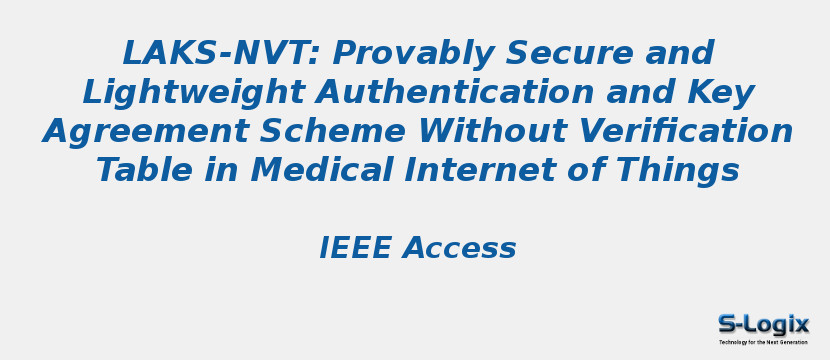Research Area: Wireless Sensor Networks
Wireless body area networks (WBANs) and wireless sensor networks (WSNs) are important concepts for the Internet of Things (IoT). They have been applied to various healthcare services to ensure that users can access convenient medical services by exchanging physiological data between user and medical server. User physiological data is collected by sensor nodes and sent to medical service providers, doctors, etc. using public channels. However, these channels are vulnerable to various potential attacks, and hence, it is essential to design provably secure and lightweight mutual authentication (MA) schemes for medical IoT to protect user privacy and achieve secure communication. A lightweight mutual authentication and key agreement (MAKA) scheme was designed in 2019 to guarantee user privacy, but we found that the scheme does not withstand impersonation, stolen senor node and leaking verification table attacks, and it does not also ensure anonymity, untraceability and secure mutual authentication. This paper proposes a provably secure and lightweight MAKA scheme for medical IoT, called LAKS Non-verification table (NVT), that does not require a server verification table. We assess LAKS-NVT-s security against various potential attacks and demonstrate that it achieves secure MA between sensor node and server using Burrows-Abadi-Needham logic. We employ the well-known Real-Or-Random which is random oracle model to prove that LAKS-NVT provides a session key security. In addition, the formal security verification using the widely-accepted Automated Validation of Internet Security Protocols and Applications (AVISPA) software tool has been performed and the results show that LAKS-NVT is also secure. We compare LAKS-NVT-s performance against contemporary authentication schemes, and verify that it achieves better security and comparable efficiency. The practical perspective of LAKS-NVT is also carried out via the Network Simulator 2 (NS2) simulation study.
Keywords:
Author(s) Name: Kisung Park; Sungkee Noh; Hyunjin Lee; Ashok Kumar Das; Myeonghyun Kim; Youngho Park; Mohammad Wazid
Journal name: Body Area Networks
Conferrence name:
Publisher name: IEEE
DOI: 10.1109/ACCESS.2020.3005592
Volume Information:
Paper Link: https://ieeexplore.ieee.org/document/9127942
